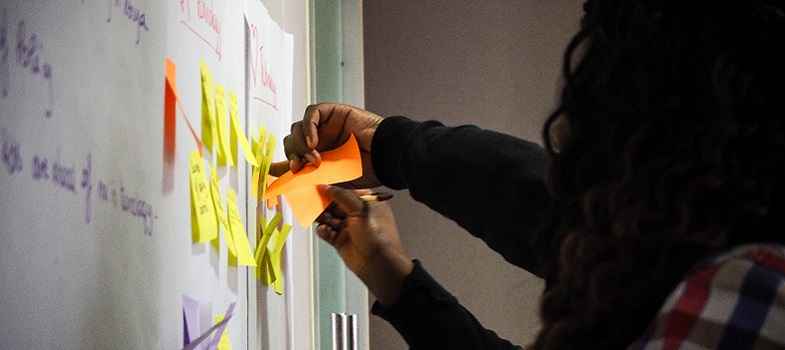Making Digital Decisions: Effective strategies for teaching
‘There have been other cases where the students miss a class and then they are able to listen to the recorded classes. Even after COVID I think it will be very important for us to be recording our classes.’ (Faculty chair)
‘With time, people are beginning to embrace this kind of teaching and in fact a number of people who resisted it initially prefer to use the blended or virtual mode of teaching now.’ (Department chair)
Now we highlight the ways in which teaching modes can be combined, with examples, and consider some challenging areas of online learning, such as teaching practical subjects.
Communicating with students
Without proactive communication and clear guidance on timetables and expectations, students studying through technology may feel isolated and not know where to start or what to do. Consider how best to:
- provide a schedule that explains the timing and work involved in course activities.
- give students reminders and guidance about any synchronous teaching sessions which they will need to join through particular tools and at particular times.
- communicate with students through the tools they already use and are accessible to them.
- establish and agree on the forms of communication that will be used, so that students know where to expect information and teachers do not assume students will have received messages.
Synchronous and asynchronous approaches
Teaching may take place at the same time (synchronous mode) or with the students engaging with it at different times (asynchronous mode), or may rely on one of these approaches. Both can support similar achievements in learning (Johnson, 2008), but there are advantages and challenges to each as well.
Asynchronous teaching offers greater flexibility for learners and could allow them to overcome some barriers such as intermittent connectivity. It can also allow students to set their own pace through the materials or activities rather than having to keep up with their peers or a lecturer.
Synchronous teaching can better support a sense of ‘social presence’ (Moallem, 2015) which can increase student satisfaction (Richardson et al., 2017) and counter the potential to feel isolated.
Teaching practical subjects
It is possible to find ways to support students to learn almost any subject remotely. Good results can also be achieved by ‘blending’ online materials and activities with in-person teaching (Lovett et al., 2008, DeNuei and Dodge, 2006). If a blended approach is taken, decisions then need to be made about how best to combine these approaches in the structure of a course.
Development of practical skills and work-based activities in-person can be effectively combined with online learning. In ‘flipped learning’, course materials are delivered online in advance and the classroom becomes the space for students and teachers to discuss the material, apply their learning and engage with each other in a more active and focused way. This approach has been particularly popular and effective in subjects that combine theory and practice, such as engineering (Karabulut‐Ilgu et al., 2018) and music.
Example – Combining theory and practice to teach music:
‘You want the student to develop certain skills. You must separate the elements you want to teach. During the online learning we did more of the theory, and then when they came we decided to play the music that they were not able to hear online.’ (Exam coordinator)
Key decisions
- Develop a comprehensive approach to communicating timetables and expectations to students in advance, using communication channels that will reach them.
- Ensure that asynchronous teaching is used to support access and flexibility for all students, and that the advantages of synchronous activities are considered and used appropriately.
- Decide if and how in-person activities combine with online teaching and learning.
